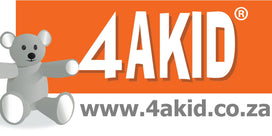Help for Stuttering Children
Stuttering is a speech disorder that affects the fluency and flow of speech. Children who stutter may repeat or prolong sounds, syllables, or words; or have pauses or blocks in their speech. Stuttering can make it hard for children to communicate with others, and may affect their self-confidence and social skills.
Stuttering is common among young children as they are learning to speak. About 5 to 10 percent of children stutter at some point in their lives, usually between the ages of 2 and 6¹. Most children outgrow stuttering by the time they reach school age. However, some children may continue to stutter into adulthood.
The causes of stuttering are not fully understood, but they may involve a combination of factors such as genetics, brain development, speech and language skills, and environmental influences¹². Stuttering is not caused by emotional problems or bad parenting.
There is no cure for stuttering, but there are treatments that can help children improve their speech fluency and confidence. In this article, we will discuss how to recognize the signs of stuttering in children, how to help them at home and at school, and when to seek professional help.
How to recognize the signs of stuttering in children?
Stuttering can vary in severity and frequency depending on the child's age, mood, situation, and listeners. Some common signs of stuttering in children are¹²:
- Repeating sounds (e.g., b-b-b-ball), syllables (e.g., ba-ba-baby), or words (e.g., I-I-I want)
- Prolonging sounds (e.g., sssssnake)
- Having pauses or blocks in speech (e.g., I want a --- cookie)
- Adding extra words or sounds (e.g., um, uh, like)
- Having facial or body movements (e.g., blinking, lip trembling, head nodding)
- Showing signs of struggle or frustration (e.g., grimacing, tensing up, avoiding eye contact)
- Avoiding certain words or situations (e.g., changing the topic, refusing to speak)
Not all children who show these signs have a stuttering problem. Some children may have normal disfluencies that are part of their speech development. Normal disfluencies usually occur less frequently and less noticeably than stuttering disfluencies. They also do not cause the child any distress or difficulty.
Some examples of normal disfluencies are:
- Repeating whole words or phrases (e.g., I want-I want a cookie)
- Hesitating or using fillers (e.g., um, well, you know)
- Revising sentences (e.g., I like this one-no that one)
How to help stuttering children at home?
Parents and caregivers play an important role in supporting their children who stutter. Here are some tips on how to help your child at home¹²³:
- Listen attentively and patiently to your child. Show interest in what they are saying, not how they are saying it. Maintain eye contact and use positive body language.
- Speak slowly and calmly to your child. Use simple and clear sentences. Avoid interrupting, correcting, or finishing your child's sentences.
- Model fluent speech for your child. Repeat what they say in a smooth and relaxed way. For example, if your child says "I-I-I want juice", you could say "You want juice".
- Praise your child for their efforts and achievements. Focus on their strengths and abilities, not their weaknesses or mistakes. For example, you could say "You did a great job telling me about your day".
- Reduce stress and pressure on your child. Create a calm and supportive environment at home. Avoid rushing or hurrying your child when they speak. Allow them enough time to express themselves.
- Encourage your child to participate in activities that they enjoy and excel at. This can boost their self-esteem and confidence. Help them find hobbies and interests that do not depend on their speech fluency.
- Read books and stories with your child. Reading aloud can help your child practice their speech skills and learn new words. You can also use books that feature characters who stutter or have other challenges to teach your child about acceptance and resilience.
How to help stuttering children at school?
School can be a challenging and stressful place for children who stutter. They may face academic difficulties, social isolation, or bullying. Teachers and classmates can help create a positive and inclusive learning environment for children who stutter. Here are some ways to help your child at school¹²³:
- Communicate with your child's teacher. Share information about your child's stuttering, such as what triggers it, how it affects them, and what strategies work for them. Ask the teacher to monitor your child's progress and well-being at school.
- Educate your child's classmates. With your child's permission, you or the teacher can explain to the other students what stuttering is and how they can support their peer who stutters. You can use books, videos, or activities to raise awareness and empathy.
- Advocate for your child's needs. If your child requires any accommodations or modifications at school, such as extra time for oral presentations, alternative ways of assessment, or speech therapy services, request them from the school administration.
- Encourage your child to join clubs or teams. Extracurricular activities can help your child make friends, have fun, and develop new skills. Look for opportunities that match your child's interests and talents.
- Teach your child how to cope with teasing or bullying. Help your child develop assertive and respectful responses to negative comments or actions. For example, they could say "I stutter and that's okay" or "Please don't make fun of me". Remind your child to report any incidents to a trusted adult.
When to seek professional help for stuttering children?
Stuttering is usually a normal and temporary stage of development for young children that does not require any medical intervention. However, some children may need professional help to improve their speech fluency and confidence.
You may want to consult a speech-language pathologist (SLP) if your child¹²:
- Stutters for more than 6 months
- Stutters with other speech or language problems
- Stutters more frequently or severely as they grow older
- Stutters with physical signs of struggle or tension
- Stutters with emotional signs of anxiety or frustration
- Stutters with social signs of avoidance or isolation
- Has a family history of stuttering or related communication disorders
An SLP is a health professional who specializes in evaluating and treating speech, language, and swallowing disorders. An SLP can assess your child's stuttering and determine if they need treatment.
Treatment for stuttering may include:
- Speech therapy. This involves working with an SLP to learn techniques and strategies to improve speech fluency and reduce stuttering. For example, the SLP may teach your child how to slow down their speech, use breathing exercises, or change their speech patterns.
- Parent-child interaction therapy. This involves working with an SLP and the parents or caregivers to learn how to communicate effectively with the child who stutters. For example, the SLP may teach the parents or caregivers how to model fluent speech, provide positive feedback, and create a supportive environment for the child.
- Electronic devices. These are devices that alter the sound of the child's voice in some way, such as by delaying it or changing its pitch. This can help the child speak more fluently by reducing their awareness of their stuttering or enhancing their auditory feedback.
- Cognitive behavioral therapy (CBT). This is a type of psychotherapy that helps the child cope with their thoughts and feelings about stuttering. For example, the therapist may help the child identify and challenge negative beliefs, develop coping skills, and boost their self-esteem.
Conclusion
Stuttering is a common speech disorder that affects many children as they are learning to speak. It can cause difficulties in communication, as well as emotional and social problems. However, there are ways to help children who stutter at home and at school, such as listening patiently, speaking slowly, praising their efforts, educating others, and advocating for their needs.
Most children will outgrow stuttering by themselves, but some may need professional help from a speech-language pathologist. Treatment for stuttering may include speech therapy, parent-child interaction therapy, electronic devices, or cognitive behavioral therapy.
If you are concerned about your child's stuttering, you should consult your doctor or a speech-language pathologist for advice.
Source:
(1) Stuttering - Symptoms and causes - Mayo Clinic. https://www.mayoclinic.org/diseases-conditions/stuttering/symptoms-causes/syc-20353572.
(2) What Is Stuttering? Diagnosis & Treatment | NIDCD. https://www.nidcd.nih.gov/health/stuttering.
(3) Stuttering in children: How parents can help - Harvard Health. https://www.health.harvard.edu/blog/stuttering-in-children-how-parents-can-help-202110182619.










